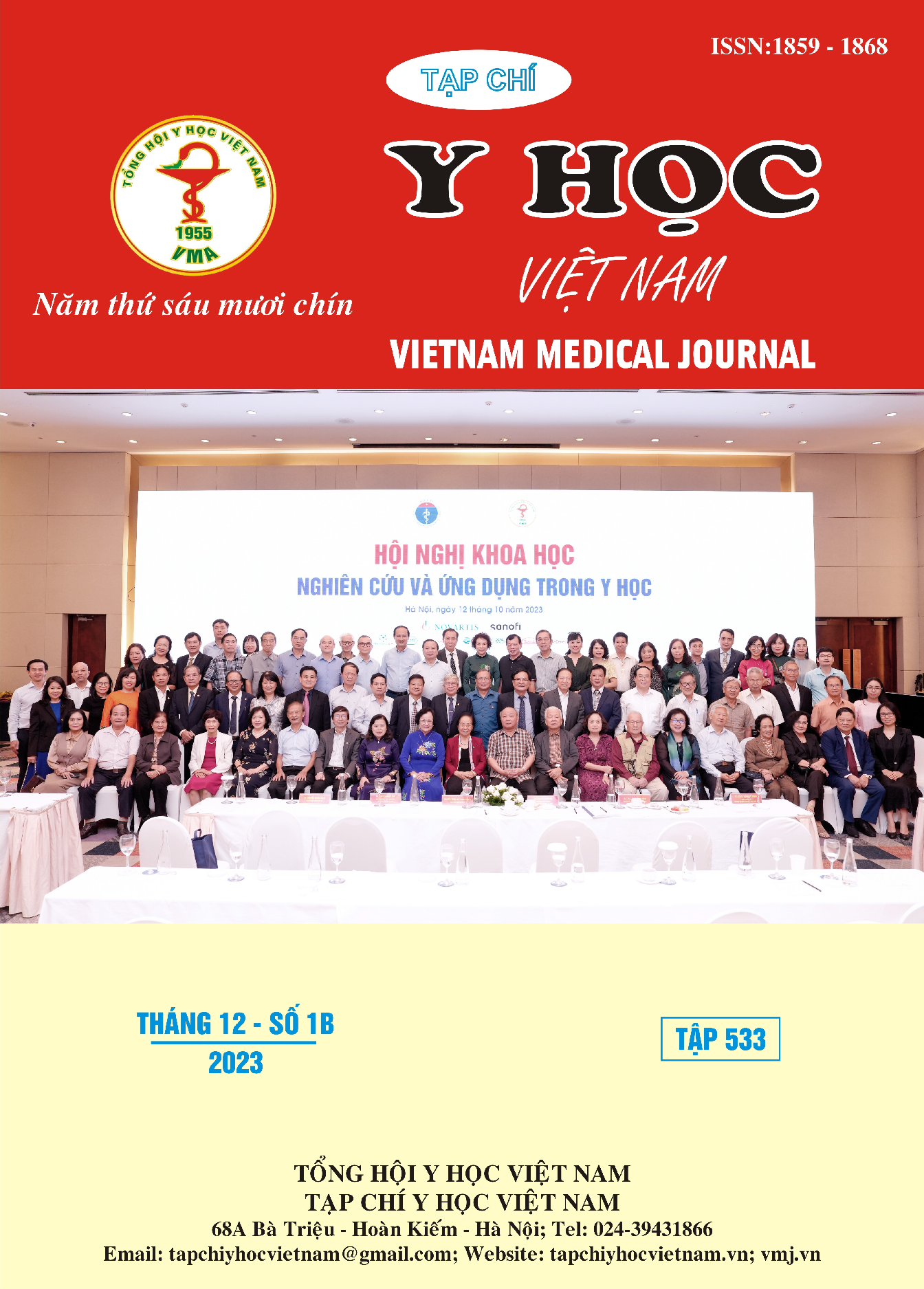RESULTS OF TREATMENT INTERTROCHANTERIC FRACTURES WITH PROXIMAL FEMUR NAIL ANTIROTATION AT SAINT PAUL GENERAL HOSPITAL
Main Article Content
Abstract
Intertrochanteric fractures are rising in frequency due to increasing average life expectancy. According to statistics by Eastell and Lambert1, there are estimated to be over 1.5 million cases of femoral head fractures in the world, and it is predicted that by 2025, there will be 2.6 million cases. Currently, there are many methods of treating intertrochanteric fractures; conservative treatment has poor results, and surgical treatment is accepted. Implant options for intertrochanteric fracture surgery using proximal femoral intramedullary nails are recommended by the AAOS2. The study aims to evaluate the treatment results of intertrochanteric fractures using PFNA at Saint Paul General Hospital, with 90 patients meeting the selection criteria. Results: the average age of the study subjects was 78.04 ± 10.98; The female-male ratio is approximately 2.7 to 1. Fractures are mainly due to daily life accidents, accounting for 82.2%. TAD Index group ≤ 25mm accounts for 88.9% with an average value of 19.19 ± 2.48mm, group > 25mm accounts for 11.1% with an average value of 26.14 ± 0.76mm. Cleveland Index zone 5: Center - Center accounts for 61.1%; the average femoral neck-shaft angle after surgery is 129.320, and after six months, the average is 126.750. Postoperative hip function results at six months, according to the modified Merle d'Aubigné - Postel score, were excellent and good at 72.2%, fair at 26.7%.
Article Details
References
2. O'Connor MI, Switzer JA. AAOS Clinical Practice Guideline Summary: Management of Hip Fractures in Older Adults. JAAOS - Journal of the American Academy of Orthopaedic Surgeons. 2022;30(20):e1291-e1296. doi:10.5435/jaaos-d-22-00125
3. Kerr R, Resnick D, Sartoris DJ, et al. Computerized tomography of proximal femoral trabecular patterns. J Orthop Res. 1986;4(1):45-56. doi:10.1002/jor.1100040106
4. Kim SJ, Park HS, Lee DW. Outcome of nonoperative treatment for hip fractures in elderly patients: A systematic review of recent literature. J Orthop Surg (Hong Kong). Jan-Apr 2020;28(2): 2309499020936848. doi: 10.1177/ 2309499020936848
5. Lenich A, Fierlbeck J, Al-Munajjed A, et al. First clinical and biomechanical results of the Trochanteric Fixation Nail (TFN). Technol Health Care. 2006;14(4-5):403-9.
6. Singh M, Riggs BL, Beabout JW, Jowsey J. Femoral trabecular-pattern index for evaluation of spinal osteoporosis. Ann Intern Med. Jul 1972;77(1):63-7. doi:10.7326/0003-4819-77-1-63
7. Baumgaertner MR, Curtin SL, Lindskog DM, Keggi JM. The value of the tip-apex distance in predicting failure of fixation of peritrochanteric fractures of the hip. J Bone Joint Surg Am. Jul 1995;77(7): 1058-64. doi: 10.2106/ 00004623-199507000-00012
8. Cleveland M, Bosworth DM, Thompson FR, Wilson HJ, Jr., Ishizuka T. A ten-year analysis of intertrochanteric fractures of the femur. J Bone Joint Surg Am. Dec 1959;41-A:1399-408.
9. MATTA JM, MEHNE DK, Rom R. Fractures of the acetabulum: early results of a prospective study. Clinical Orthopaedics and Related Research®. 1986;205:241-250.
10. Dorfman JD, Wyman A, FitzGerald G, Emhoff TA, Anderson FA, Santry HP. Risks factors for significant injury after geriatric falls. Int J Aging Res. 2019;2(1)doi:10.28933/ijoar-2018-12-2305


